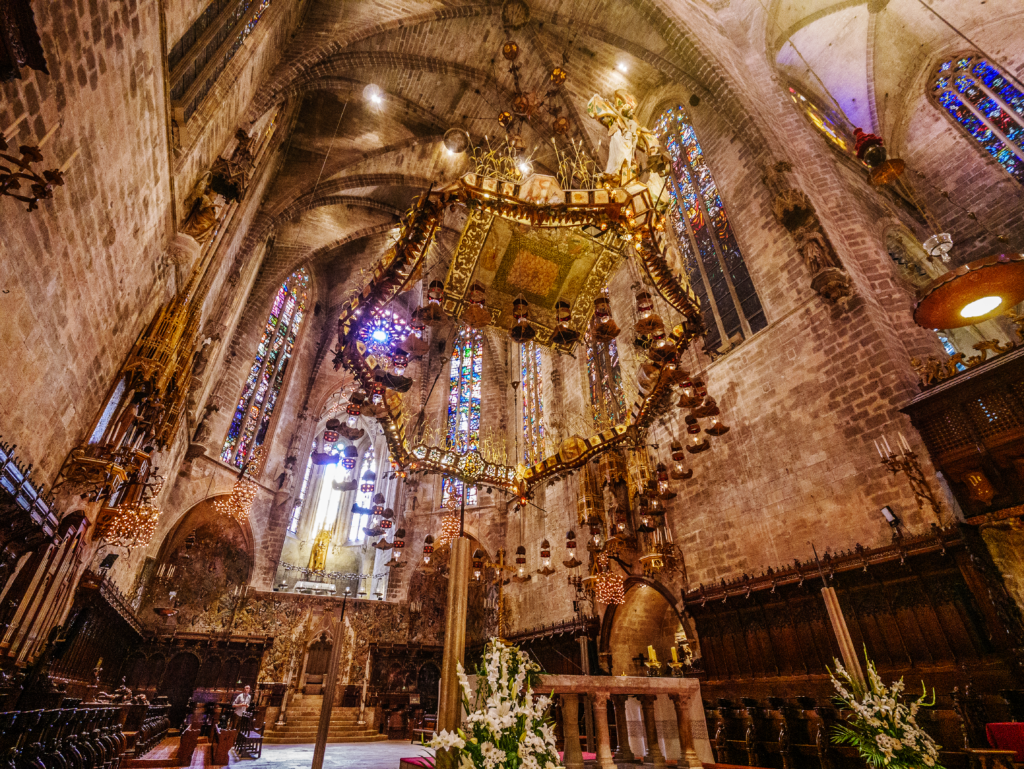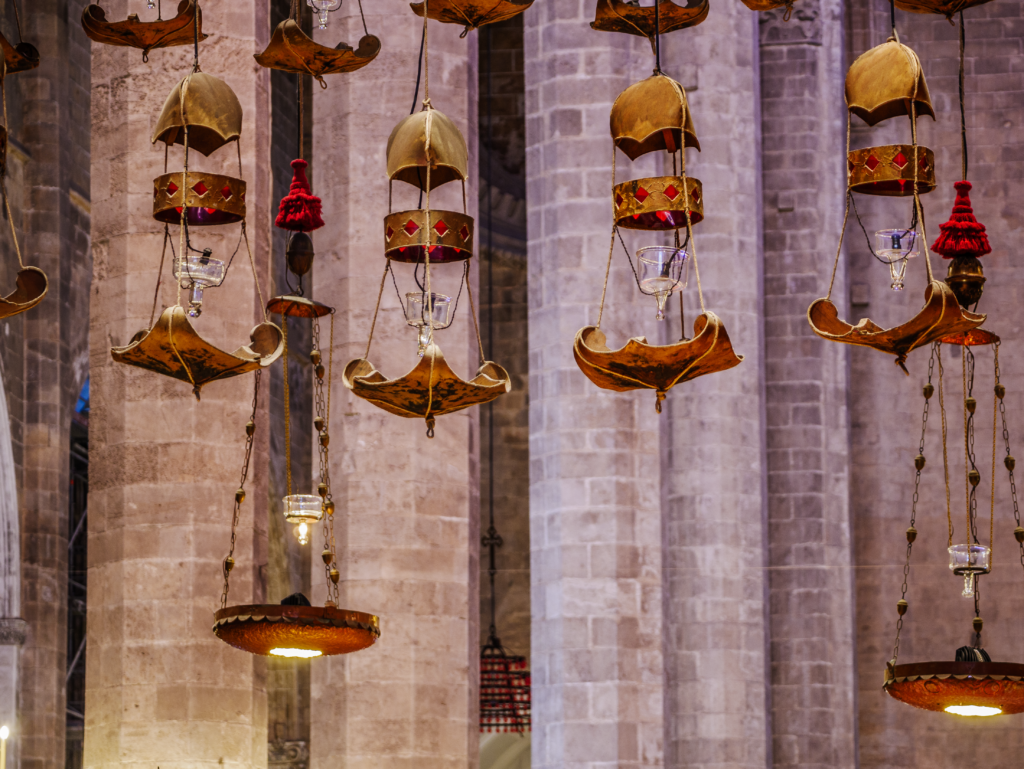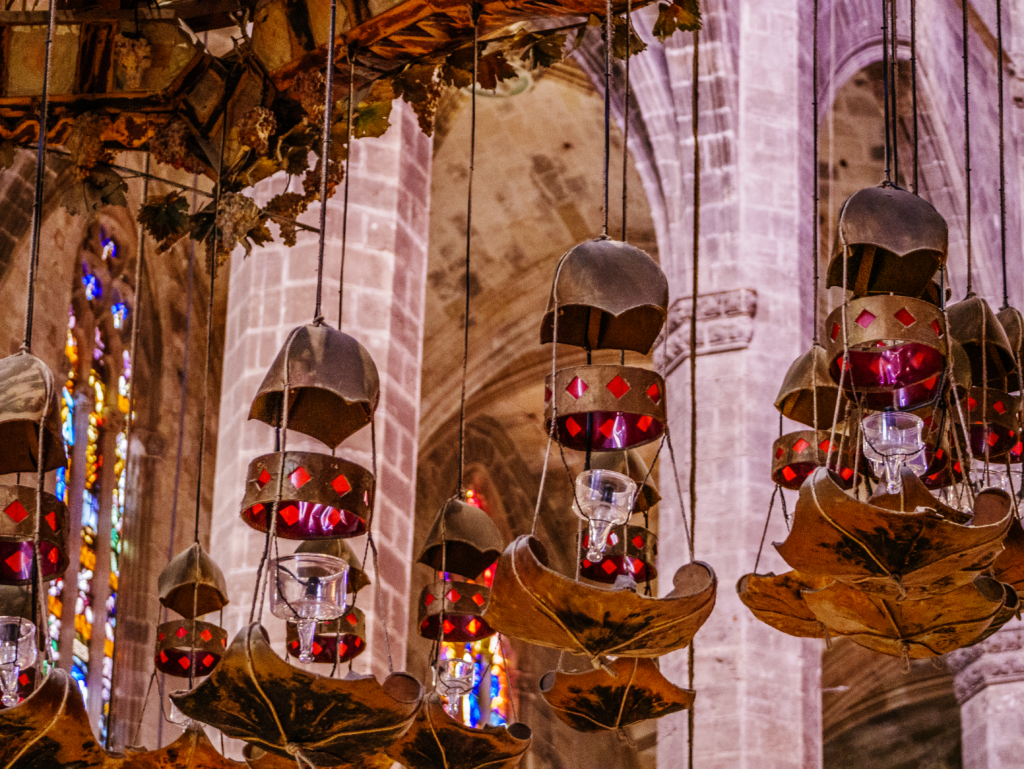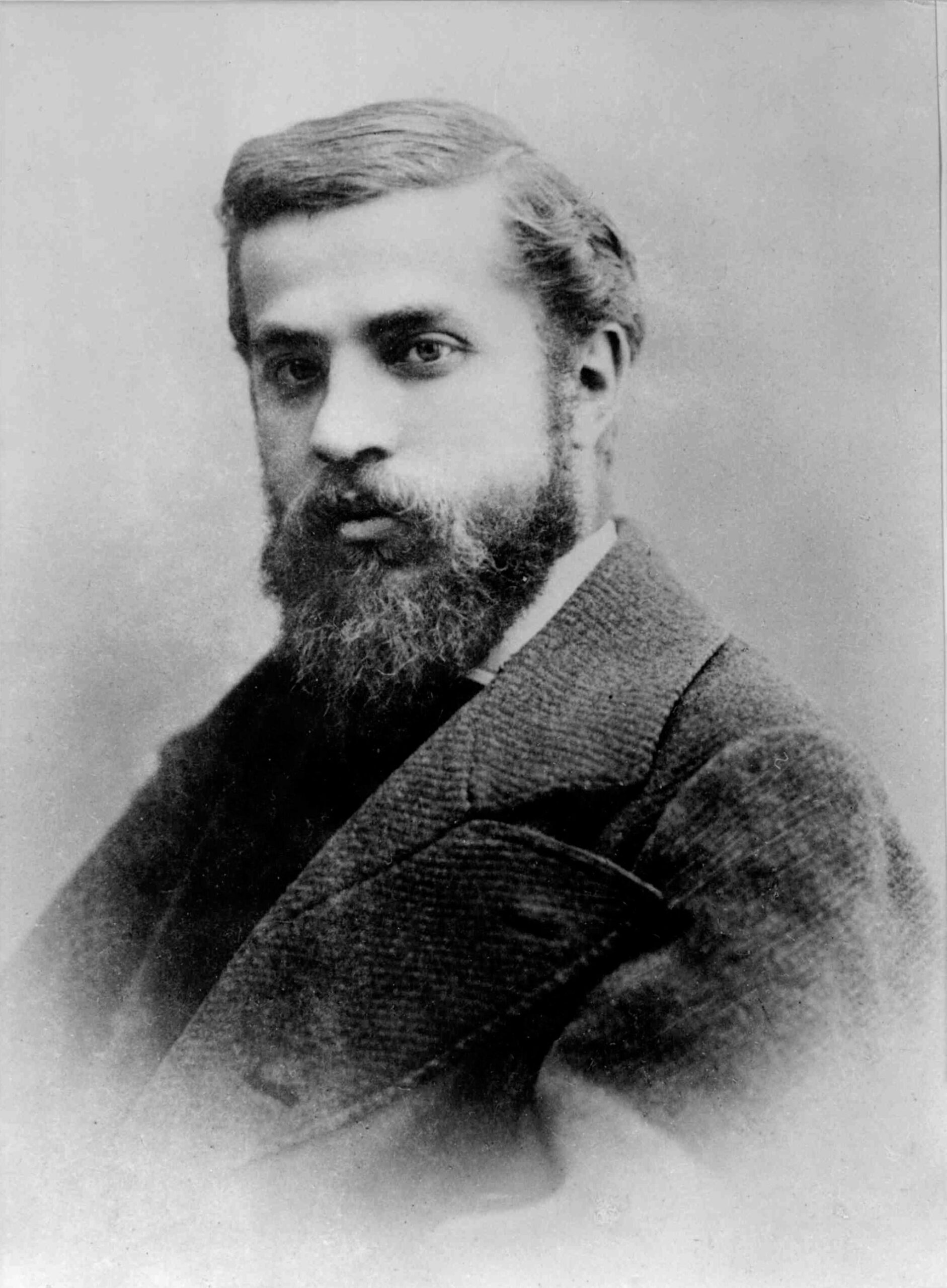Antoni Gaudí, the groundbreaking Catalan architect, is primarily celebrated for his distinct contributions to the world of architecture, particularly in Barcelona. However, his work on the Cathedral of Santa Maria of Palma, more commonly known as La Seu, in Palma de Mallorca, is a notable chapter in his illustrious career. This project, though less famous than his masterpieces like the Sagrada Família, showcases Gaudí’s unique vision and innovative approach to Gothic architecture.
Gaudí’s involvement with La Seu began in 1901 when Bishop Pere Joan Campins invited him to restore and modernize the cathedral. The bishop was an admirer of Gaudí’s work and sought to revitalize the interior of the aging Gothic structure to reflect a more contemporary and spiritually uplifting environment. The cathedral, originally constructed between 1229 and 1601, was in need of restoration. But it also needed to reflect changes in the liturgy, then sweeping across the catholic church.












Upon accepting the commission, Gaudí set out to make significant alterations that would harmonize the medieval Gothic elements with his own modernista sensibilities. One of Gaudí’s primary goals was to enhance the natural light within the cathedral. To achieve this, he removed the Baroque altarpiece that obstructed the view of the nave and allowed more sunlight to filter through the magnificent stained-glass windows. This alteration not only illuminated the interior but also restored the original grandeur of the Gothic structure.
Another significant change Gaudí made was the installation of a large, ornate baldachin – resembling, by turns, a fantastic crown or the jaw of a giant fish – over the main altar. This canopy, with its intricate ironwork and suspended lanterns, is a testament to Gaudí’s ability to blend functionality with artistic expression. The baldachin not only serves as a focal point within the cathedral but also enhances the overall aesthetic experience, drawing the eyes of the faithful and visitors alike towards the altar.
Gaudí also worked on the choir stalls, reorienting them to face the altar directly, thereby fostering a more inclusive and communal worship experience. This reconfiguration of the choir stalls was in line with his vision of creating spaces that encourage interaction and engagement among the congregation.
Additionally, Gaudí introduced various decorative elements that reflected his distinctive style. He designed new lighting fixtures (bringing electricity into the cathedral for the first time), and altarpieces, and even added a few of his signature colorful ceramic mosaics. These additions imbued the cathedral with a sense of dynamism and modernity, while still respecting its historical and spiritual essence.
However, Gaudí’s work on La Seu was not without controversy. His bold interventions met with mixed reactions, and his vision was sometimes at odds with the more conservative elements within the church. Despite these challenges, Gaudí’s contributions left an indelible mark on the cathedral, transforming it into a more vibrant and spiritually resonant space.
In 1914, due to disagreements with the church authorities and local artisans, Gaudí downed his tools and halted work on the cathedral. Nevertheless, his decade-long involvement had already profoundly transformed La Seu, leaving a legacy that continues to be appreciated by architects, historians, and visitors from around the world.








